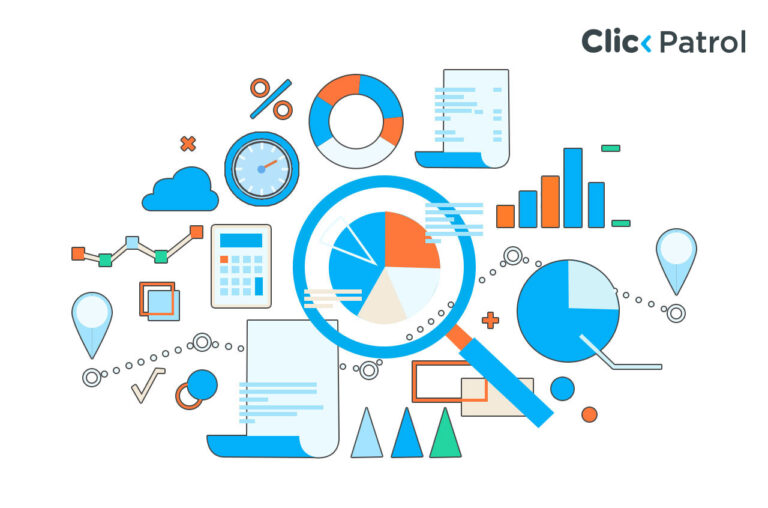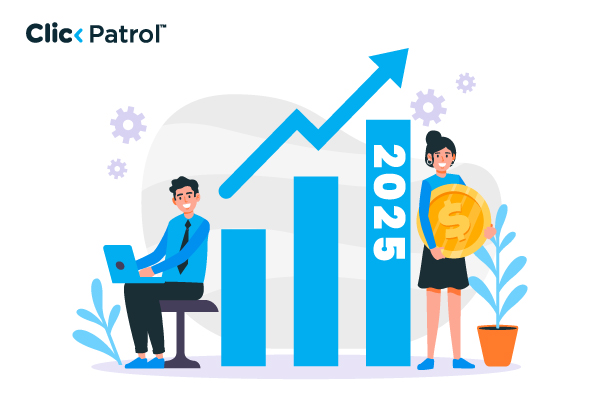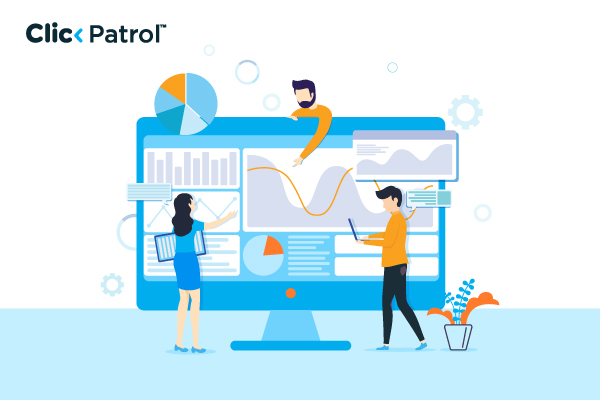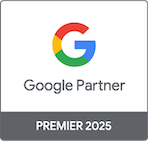
The rise of hidden Ads in digital marketing: How they work and why they are dangerous
Abisola Tanzako | Jul 21, 2025

Table of Contents
- What are hidden Ads, and how are they deployed?
- The mechanics of hidden Ads
- Types of hidden Ads
- How to detect hidden Ads in your campaigns
- Hidden Ads vs. Ad fraud: Key differences
- Challenges of hidden Ads
- Strategies for creating effective hidden Ads
- The role of hidden Ads in SEO strategy
- Optimize your strategy: Key takeaways for hidden Ads in 2025
- FAQs
Hidden ad placements account for nearly 10% of all display impressions. Companies constantly seek innovative ways to capture the audience’s attention without appearing overly promotional.
One recently popular strategy is the implementation of hidden ads, also known as ads that are neatly incorporated into the content to appear somewhat organic and non-invasive.
Statista reported that in 2023, 58.7% of marketers believed that the return on investment (ROI) of SEO-related activities, such as strategies like hidden ads, has improved substantially over the years.
This article examines hidden ad types, their functionality, and strategies for detecting and avoiding them.
What are hidden Ads, and how are they deployed?
The terms ‘hidden ad’, ‘native ad’, or ‘covert advertising’ refer to promotional messages that are designed to appear indistinguishable from the organic content on a platform.
Unlike traditional banner ads or pop-ups, hidden ads resemble and blend in with the surrounding environment, thus seeming less intrusive and more engaging.
Examples include sponsored posts on news websites, influencer-sponsored content on social media platforms, and product placement in videos and blog posts.
The mechanics of hidden Ads
Hidden ads rely on several key principles to succeed:
- Contextual relevance: The ad should fit the platform’s content and the audience’s interests. An example is a sponsored listing about some fitness equipment on a fitness blog that seems more natural than a random banner ad.
- Seamless integration: The ad must be aligned with the platform’s tone, style, and format. For example, a sponsored post on Instagram must resemble a regular user post, including organic captions and images.
- Value-driven content: Hidden ads are usually entertaining or valuable, so there is something the audience can take away from the interaction. It may be a tutorial, a review, or a narrative format that subtly advertises a particular brand without overt promotion.
- Transparency (where necessary): Although some hidden ads are intended to be discreet and less noticeable, the existence of ethical rules and regulations, such as those enforced by the Federal Trade Commission (FTC), may require clear disclosure (e.g., #ad or sponsored) to maintain transparency.
Types of hidden Ads
- Native Ad: Sponsored content, including videos or articles that fit into the platform’s editorial style, e.g., an article about a tech company in Forbes.
- Influencer marketing: Social media postings by influencers when they advertise or market products and solutions naturally, and usually do not include a sales pitch.
- Product placement: Marker placement in movies, television shows, or YouTube videos.
- In-feed ads are ads that appear in social site news feeds and are designed to resemble normal posts.
- Content recommendations are the occasional pop-up of suggested readings at the bottom of a website, commonly using systems such as Outbrain or Taboola.
How to detect hidden Ads in your campaigns
Detecting hidden ads in your campaigns is essential to protect your ad budget, maintain transparency, and ensure your marketing efforts are truly effective.
Hidden ads are placements or impressions that are served but not visible to real users; they may be buried on obscure pages, loaded behind other elements, or targeted at bots instead of humans.
Here’s how you can detect hidden ads in your campaigns:
1. Check viewability metrics
- Utilize tools such as Google Ads, Moat, Integral Ad Science (IAS), or DoubleVerify.
- Focus on viewability rates: Ads with viewability below 50% are red flags.
- Look at average time in view: very low times can indicate hidden or unnoticeable ads.
2. Audit Ad placement reports
- Review where your ads are showing up.
- Be cautious if placements include:
- Unknown or suspicious websites
- Sites with high bounce rates and no engagement
- Apps or games that users rarely interact with
- Cross-check URLs manually or use site verification tools.
3. Monitor for bot traffic
- Bots are often used to inflate impressions on hidden ads.
- Utilize fraud detection platforms such as ClickCease, CHEQ, or Pixalate.
Watch out for:
- High impressions but low clicks or conversions
- Unusual traffic spikes
- Visitors from data centers instead of residential IPs
4. Look for discrepancies in reporting
- Compare your ad server stats (e.g., Google Ads) with website analytics (e.g., Google Analytics).
- Significant gaps in impressions or conversions could mean your ads are not being properly seen or clicked by real users.
5. Use Ad verification tools
- Platforms like Adloox, White Ops (Human), or AdGuard can help detect:
- Ads are placed in hidden iframes
- Pixel stuffing (where many ads load in a single pixel)
- Stacked ads (multiple ads layered over one another)
6. Manually spot-check your campaigns
- Visit the websites or apps where your ads are supposedly displayed.
- Use tools like Ghostery, Lighthouse, or Developer Tools in your browser to inspect if the ad is visible and not hidden behind other elements.
7. Partner with transparent Ad networks
- Select networks that provide complete transparency, real-time reporting, and enable you to block low-quality placements.
- Avoid overly broad programmatic buys that don’t allow you to control where your ads appear.
Hidden Ads vs. Ad fraud: Key differences
The key differences between hidden Ads vs. Ad fraud include:
1. Definition
A. Hidden Ads: These are ads that are technically served (and counted as impressions) but are not visible to users. They may be:
- Placed off-screen
- Behind other elements (like pop-ups or overlays)
- In 1×1 pixel frames (pixel stuffing)
- On low-traffic or irrelevant pages
B. Ad Fraud: This is a deliberate and deceptive act to generate false clicks, impressions, or conversions for financial gain. It includes:
- Bot traffic
- Click farms
- Fake installs or signups
- Domain spoofing
2. Intent
A. Hidden Ads: May or may not be intentional. Some can result from poor placement strategies, lazy coding, or low-quality inventory.
B. Ad Fraud: Always intentional. The goal is to trick advertisers into paying for fake or low-quality activity.
3. Impact
A. Hidden Ads:
- Wasted impressions and budget
- Lower ROI due to low visibility
- Poor campaign performance metrics
B. Ad Fraud:
- Misleading performance data
- Inflated costs (e.g., fake clicks or leads)
- Loss of trust in platforms and metrics
4. Detection methods
A. Hidden Ads:
- Viewability audits
- Manual inspection of placements
- Ad verification tools (e.g., Moat, IAS)
B. Ad Fraud:
- Fraud detection software (e.g., White Ops, CHEQ)
- Traffic analysis (e.g., abnormal IPs, bot patterns)
- Behavioral analytics (e.g., mouse movements, session time)
5. Responsibility
A. Hidden Ads: It can be a result of negligent publishers, poor programmatic targeting, or a lack of ad quality checks.
B. Ad fraud: Conducted by fraudsters, actors who intentionally game the system (e.g., fake websites, malicious bots).
Challenges of hidden Ads
While hidden ads are effective, they come with challenges that marketers must navigate:
1. Ethical concerns: Hidden ads are subtle and may raise ethical concerns if not disclosed clearly and accurately. The FTC requires that sponsored content be labelled clearly to prevent consumer deception.
2. Risk of audience backlash: If audiences perceive a concealed ad as deceptive, it may lead to a loss of trust. For example, a product influencer can lose credibility when they market a product without disclosing that it has a sponsor.
Statista indicates that 94% of consumers will disengage with a business’s services after reading negative criticism, which may lead to poor ad implementation.
3. Complexity in execution: Creating high-quality hidden ads requires a significant amount of time. They must be engaging, relevant, and consistent with the brand’s objectives, without compromising the tone of the platform.
4. Measurement challenges: It may also be challenging to track the success of hidden ads because the impression or click-through rate may not be sufficient to address the effects of such an ad.
Strategies for creating effective hidden Ads
To maximize the impact of hidden ads, marketers should follow these best practices:
Focus on high-quality content: Invest in valuable and engaging content that resonates with your target audience. For example, a sponsored blog post should provide actionable information or entertain the reader, rather than being a sales tool.
Utilize influencer collaborations: Partner with influencers who align with the brand and have an engaged following. Ensure their sponsorships are reported to indicate their transparency.
Making SEO-friendly: Use suitable keywords, meta tags, and internal links to make the hidden ad appear in search engine results. According to a Forbes report, the first three links in organic search results receive 68.7% of all clicks.
Follow KPIs of performance: The number of impressions, engagement rates, and conversions must be tracked to determine the effectiveness of the hidden advertisements. Tools like Google Analytics can reveal a great deal.
Stay compliant: Adhere to advertising policies, such as FTC requirements, to maintain the clarity of promises and avoid punishment.
The role of hidden Ads in SEO strategy
When incorporated into a content marketing strategy, hidden ads have the potential to significantly improve SEO performance. Organic traffic can be achieved by developing high-quality content that is rich in relevant keywords, which can help businesses enhance their search engine rankings.
An example of this is a long-tail keyword-sponsored article, which may attract users seeking a specific solution and have a higher conversion rate.
92.3% of the highest-ranking domains possess at least one backlink, which underscores the necessity of link-building through the use of hidden ads.
Optimize your strategy: Key takeaways for hidden Ads in 2025
The hidden ads have great potential to create a genuine, non-invasive connection between businesses and audiences. These ads can enhance the user experience, foster trust, and boost conversions by seamlessly integrating with organic content.
However, it cannot be successful without planning, quality content, and professional ethics.
Stay ahead of your competitors by applying the abovementioned strategies and best practices to upgrade your hidden ad. Concentrate on producing value-added content, enhancing SEO, and monitoring performance to maximize ROI.
Protect your ad spend. Utilize advanced ad verification tools to prevent hidden placements and avoid wasted impressions.
FAQs
Q.1 So, how effective are the hidden ads concerning SEO?
The advantages of hidden ads on SEO include boosting dwell time, decreasing bounce rates, and generating backlinks. They encourage interaction and enhance search engine optimization (SEO) by becoming invisibly tuned into the organic content.
Q. 2 Do hidden ads raise ethical concerns?
Yes, hidden ads should be indicated elaborately to prevent misrepresentations to viewers. To provide transparency, the FTC requires tags such as “#ad” or “sponsored.” Non-disclosure has the potential to destroy customer confidence and damage brand loyalty.
Q. 3 How will businesses gauge the effectiveness of hidden ads?
Companies can measure success using engagement metrics, such as the number of clicks and shares, dwell time, and conversions. Apps such as Google Analytics can provide information on the efficiency of hidden ads and their net effect on marketing efforts.





